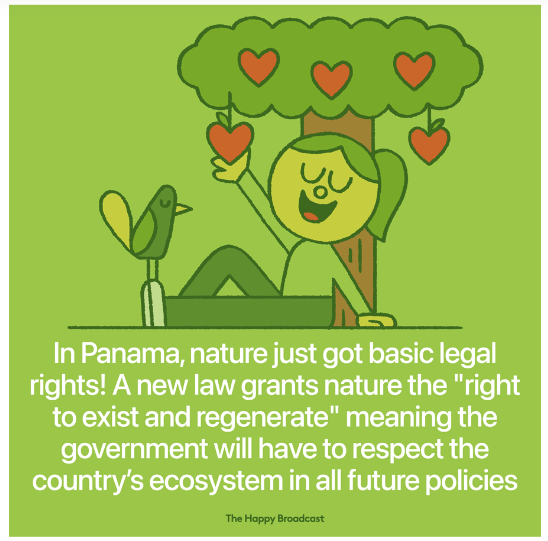the ultimate climate change good stories checklist from across the globe

Climate reportage can get overwhelmingly negative or ‘doomy-gloomy’ (as I like to call it) sometimes, selectively covering natural disasters, rising temperatures and sea levels (also, sweaty penguins etc. which can put a serious dampener on anybody’s mood).
However, there is a silver lining. An increasing number of individuals, organisations and governments even, are responding to the call – to change their ways and do something for the better.
Nothing seems to have united people more than this shared goal – of saving the one and only planet we have for our loved ones and the ones who come next. This decision to look for a brighter side to things, does not mean that one denies the climate realities of today – climate change is happening and it is happening fast; causing irreversible changes also in its wake.
On the flip side, we are learning, even re-learning our ways, to adapt and thrive in these new conditions – opting to change themselves rather than the environment, to fit their needs. As a counter to this barrage of catastrophe; an assortment of the good in climate news to help you break the loop.
1. Solar electricity prices dropped 89% over the last decade.
In 2009, it was 223% more expensive to build a new solar farm than a new coal plant. But now it’s flipped.
Based on new data gathered by Our World In Data, electricity from a new coal farm is 177% more expensive than its solar counterpart. Renewable technology just got way more affordable and accessible.
2. The coral reefs of Fiji’s shores are alive in all their glory again.
Coral reefs are critical and essential to healthy oceans (and by extension, a healthy planet. Five years back they were all destroyed by a tropical cyclone,
3. Greenland announced that it would suspend all new oil and gas exploration projects.
The US Geological Survey (USGS) estimates around 17.5 billion undiscovered barrels of oil and 148 trillion cubic feet of natural gas contained in Greenland’s offshore area. In their 2007 report, North Danmarkshavn Salt Basin and the South Danmarkshavn Basin have been estimated to contain most of the undiscovered petroleum resources. But its remote location and often harsh climatic conditions make it difficult to navigate and explore.
“It is a decision where climate considerations, environmental considerations and economic common sense go hand in hand,” said the Minister of Natural Resources, Naaja Nathanielsen, in a government statement. “The future does not lie in oil. The future belongs to renewable energy, and in that respect, we have much more to gain.”
4. Reflective streets in Los Angeles are helping cool down neighbourhoods, cut down emissions and keep people healthy, overall.
When scientists aboard the International Space Station (ISS) direct their thermal cameras toward Los Angeles, what stands out from the sweltering red and orange blob is a crescent of cool, blueish-white located deep in the San Fernando Valley.
5. Going Plastic Free, A Global Movement Now
Over 325 million people from 177 countries, pledged to go plastic-free for the month of July, in support of the campaign Plastic Free July started by Rebecca Prince-Ruiz, back in 2011.
6. The World’s Most Famous Building Powered by Wind Now.
The Empire State Building and 13 other buildings owned by Empire State Realty are powered exclusively by wind now. Empire State Realty Trust runs the famous Empire State Building, with a 10.1 million-square-foot portfolio that is now powered by renewable wind energy. Comparable equivalent measures would require:
– Every New York State household to turn off all their lights for a month; or
– Removal of all New York City taxis for one year; or
– The addition of two Central Parks to New York City
7. Solar energy can now be stored for up to 18 years.
In 2017, scientists at a Swedish university created an energy system that made it possible to capture and store solar energy for up to 18 years, releasing it as heat as and when required. Now, researchers have succeeded in getting the system to produce electricity by connecting it to a thermoelectric generator. Although it is still nascent, the concept developed at Chalmers University of Technology in Gothenberg could pave the way for self-charging electronics that use stored solar energy on demand.
8. Panama brings in new law granting nature the ‘right to exist’
Groundbreaking legislation which granted nature the “right to exist, persist and regenerate its life cycles” was passed in Panama recently.

It means that their parliament will now have to consider the impact of its laws and policies on the natural world. The country joins Colombia, New Zealand, Chile and Mexico in granting natural legal protection, either through their Constitution or the court system.
There are many more stories alike, which give or rekindle hope in the hearts of climate activists and nature lovers. It only goes on to show that, no matter the adversity, there is always scope for human hope.
Keep your chin up, it is not as bad as it looks.
